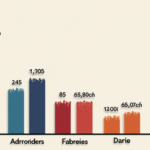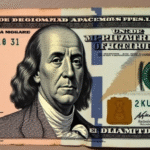Background on Key Figures and Relevance
Former U.S. President Donald Trump has recently threatened to impose a 30% tariff on imports from Mexico, citing insufficient cooperation in addressing the U.S. fentanyl crisis and trade deficit with Mexico.
Claudia Sheinbaum, the President of Mexico City, expressed confidence in reaching an agreement with the U.S. government despite these threats.
Key Tariff Details and Impact
This proposed 30% tariff would replace the existing “emergency duty” of 25% on Mexican products that do not comply with the USMCA (United States-Mexico-Canada Agreement). Trump highlighted concerns over Mexican policies related to drug trafficking, migration, and trade deficits.
From January to May 2023, the U.S. had a trade deficit of $79,442 million in merchandise trade with Mexico, with exports totaling $140,068 million and imports reaching $219,510 million.
Gabriela Siller, an analyst at Banco Base, estimated that the U.S. should be collecting an effective average tariff of 14.24% on imports from Mexico, considering all existing tariffs.
Currently, only 84% of U.S. imports from Mexico are tariff-free, partly due to operational delays at customs. However, reported figures show an average tariff of 4.34%, with only 47.16% of Mexican imports meeting T-MEC rules.
Mexico exports steel, aluminum, and copper at 50% tariffs, along with automobiles and certain auto parts at 25%. The U.S. content in autos is exempt from tariffs for Mexico and Canada, while Mexican and Canadian auto parts remain tariff-free if they qualify as origin under the T-MEC until the Commerce Department establishes a formal procedure to apply the tariff only to non-U.S. content.
Mexico’s Response and EU’s Stance
In response, Mexico’s Secretary of Economy, Marcelo Ebrard, reported that a Mexican delegation met with U.S. departments of State, Commerce, Energy, along with the National Security Council and the U.S. Trade Representative’s office to establish a permanent bilateral working table for addressing key issues in their relationship.
Topics discussed included security, migration, border management, water resource management, and economic relations.
Goldman Sachs maintained its forecast of zero growth for Mexico, with an upside bias, acknowledging the tariff increase’s impact on activity but not adjusting their prediction due to uncertainty about potential retaliation.
The European Union (EU), also facing a 30% tariff threat from the U.S., announced that it would suspend retaliatory tariffs against the U.S. to facilitate negotiations and avoid a global 30% tariff, according to Commission President Ursula von der Leyen.
Key Questions and Answers
- What is the proposed tariff rate? Trump threatened a 30% tariff on imports from Mexico.
- What is the current emergency duty? The existing “emergency duty” is 25% on Mexican products not complying with the USMCA.
- What is the U.S. trade deficit with Mexico? The U.S. had a $79,442 million trade deficit with Mexico from January to May 2023.
- What are the tariffs on Mexican exports? Tariffs range from 50% for steel, aluminum, and copper to 25% for automobiles and certain auto parts.
- How did Mexico respond to the tariff threat? A Mexican delegation met with U.S. departments to establish a bilateral working table for addressing key issues.
- What is the EU’s stance on the tariff threat? The EU suspended retaliatory tariffs against the U.S. to negotiate and avoid a global 30% tariff.






